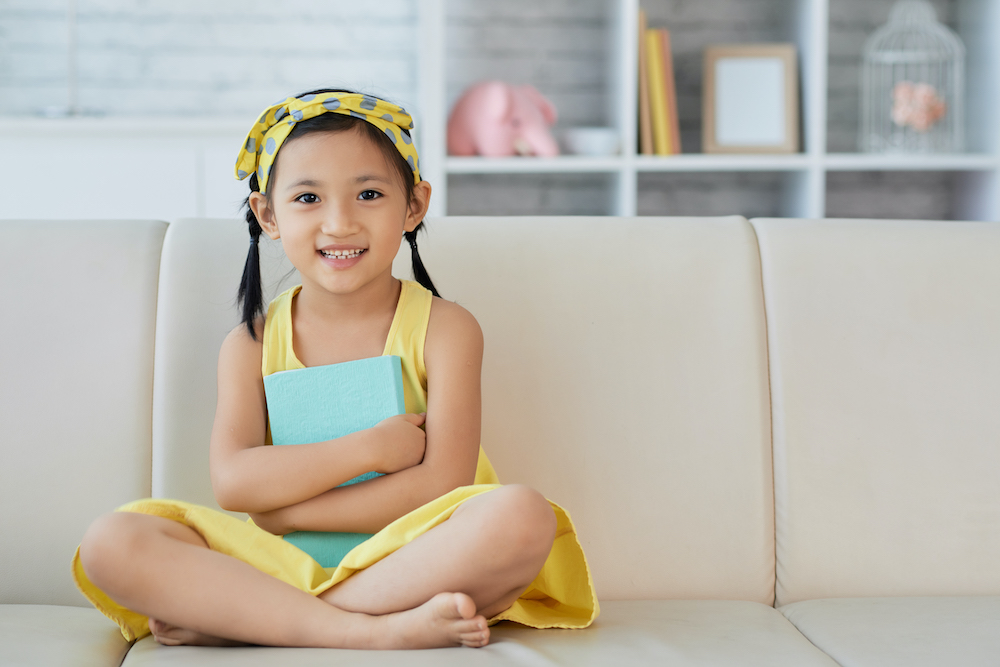
Understanding Covid-19 Pandemic impact on children’s vision
The Covid-19 pandemic is unlike anything the world has ever experienced and its spread is affecting the lives of millions including your children. With schools closed and outdoor activities banned, children are kept indoors away from one hazard but potentially running into another.
What are your children doing now?

Are they watching television? Are they streaming online? Are they interfacing online?
Likely they are.
Nielsen data shows, Malaysian spend average 7 hours 8 minutes daily during Movement Control Order (MCO) watching television. This is an increase by 27.4% or 92 minutes compared to period prior to MCO. The data has yet to include other forms of digital devices such as education, gaming or online streaming.
The significant increase of digital screen time has a potential hazard. It comes in the form of overexposure to blue-light or some may call it blue-light phototoxic.
What is Blue Light?

Blue light is a color within the visible light spectrum and the reason our sky appears blue. Although blue light is essential in our daily lives but overexposure via artificial sources such as digital screens and electronic devices leads to digital eye strain symptoms (eye fatigue, dry eyes, blurred vision and headaches), myopia and vision loss 2.

A survey of the impact of screen time in schoolchildren visual acuity show the occurrence and development of poor eyesight, and the higher incidence of nearsightedness (myopia) correlates with the increase in the length of digital screen time 3. Blue-light can produce damages to corneal, crystal lens and retina creating an irreversible damage to your children’s vision. Scientist continues to advice the necessity to take appropriate protective measures when using blue light-related products 4.
Are you doing anything about it?
Children are especially vulnerable to the hazards of blue light resulting in vision problems that may impact their learning abilities resulting in your child not able to achieve their maximum potential.
Covid-19 pandemic may impact your life now but avoid it leaving a legacy on your child’s vision.
What must you do now? Here are a few tips.

- Reduce screen time: Try to decrease the amount of time spent in front of these screens. Take frequent breaks to give your child’s eyes a rest by following the 20:20 rule – every 20 minutes of screen time, take a 20 seconds break.
- Use filters: Special blue light screen filters are available for devices with digital screen. Their function is to decrease the amount of blue light emitted.
- Wear computer glasses: Special blue light filter glasses are available for your child. Their function is to filter blue light from reaching your child’s eyes.
- Add-on supplements. Beneficial eye nutrients such as Lutein and Zeaxanthin. Studies shows both nutrients promote development of good vision and protect your child’s vision against blue light hazards 5.


Supplementing with lutein and zeaxanthin is important because human bodies cannot produce these eye-protective nutrients 6. Both must be obtained via diet. Try Nature’s Way Kids A+ Blue Light Gummies that contains lutein, zeaxanthin and vitamin A that helps to filter and protect children’s vision against blue-light hazards. It comes in a gummies form that your child will love to take. Helping you safeguard your child’s vision during their key learning years.
Disclaimer:
This is for informational and entertainment purposes only and is not a substitute for medical advice, diagnosis or treatment. If you have any medical problem always first consult with your physician. The information in this story is accurate as of press time. However, as the situation surrounding COVID-19 continues to evolve, there is possibility some data have changed since publication. We encourage readers to stay informed on news and recommendations regarding Covid-19 pandemic.
Reference:
- Nielsen. (2020). Webinar Covid-19 Navigating Malaysia shifting retail and consumer landscape. Retrieved from https://www.nielsen.com/my/en/insights/webinar/2020/webinar-covid-19-navigating-malaysias-shifting-retail-and-consumer-landscape/
- Zhao HL, Jiang J, Yu J, Xu HM. (2017). Role of short-wavelength filtering lenses in delaying myopia progression and amelioration of asthenopia in juveniles. Int J Ophthalmol. 10(8):1261-1267.
- Czepita D, Mojsa A, Ustianowska M, Czepita M, Lachowicz E. (2010). Reading, writing, working on a computer or watching television, and myopia. Klin Oczna. 112(10-12):293-295.
- Zhao ZC, Zhou Y, Tan G, Li J. (2018). Research progress about the effect and prevention of blue light on eyes. Int J Ophthalmol. 11(12): 1999-2003.
- Mares J. (2016). Lutein and Zeaxanthin isomers in eye health and disease. Annu Rev Nutr. 36: 571-602.
- Craft NE, Haitema TB, Garnett KM, Fitch KA, Dorey CK. (2004). Carotenoid, tocopherol, and retinol concentrations in elderly human brain. J Nutr Health Aging. 8:156–62. [PubMed: 15129301]
- Rose KA, Morgan IG, Ip J, Kifley A, Huynh S. (2008). Outdoor activity reduces the prevalence of myopia in children. Ophthalmology. 115(8):1279-1285.
- Ham WT, Mueller HA. (1976). Retinal sensitivity to damage from short wavelength light. Nature. 260: 153–155.
